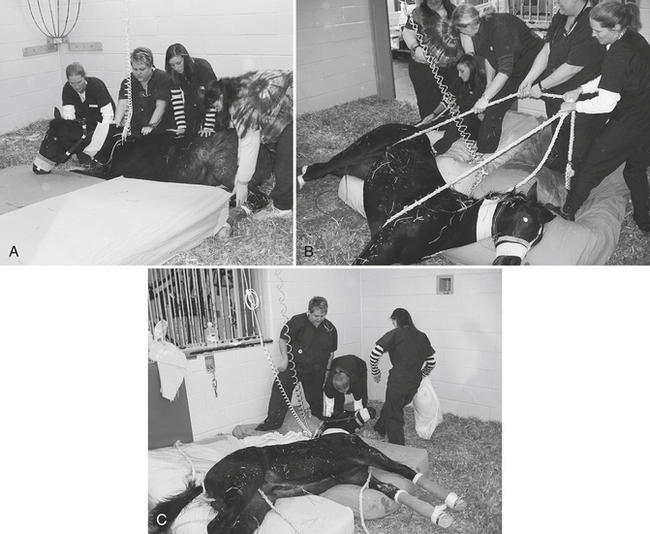CHAPTER 203 Nursing Care of the Recumbent Horse
Multiple conditions, including laminitis, rhabdomyolysis, traumatic injury, arthritic changes, and neurologic or muscular disease, can render horses recumbent with the possibility for recovery. There is no doubt that excellent nursing care is a key contributor to the welfare and the recovery of these horses.
POSTURAL ADJUSTMENTS
For certain smaller horses and ponies that are compliant with manipulation, repositioning can be accomplished with as few as three or four trained staff members (Figure 203-1). The horse’s limbs can be tucked in toward the abdomen and the body pushed to roll over onto the limbs, permitting the horse to rest sternally for as long as possible. Straw bales or wedge pads can be used to prop the horse in sternal position. Many horses appear to favor one side and tend to go from sternal to lateral on the favored side if not encouraged to rest sternally or to roll to the opposite side. In such cases the horse must occasionally be repositioned to lateral recumbency on the unfavored side.




